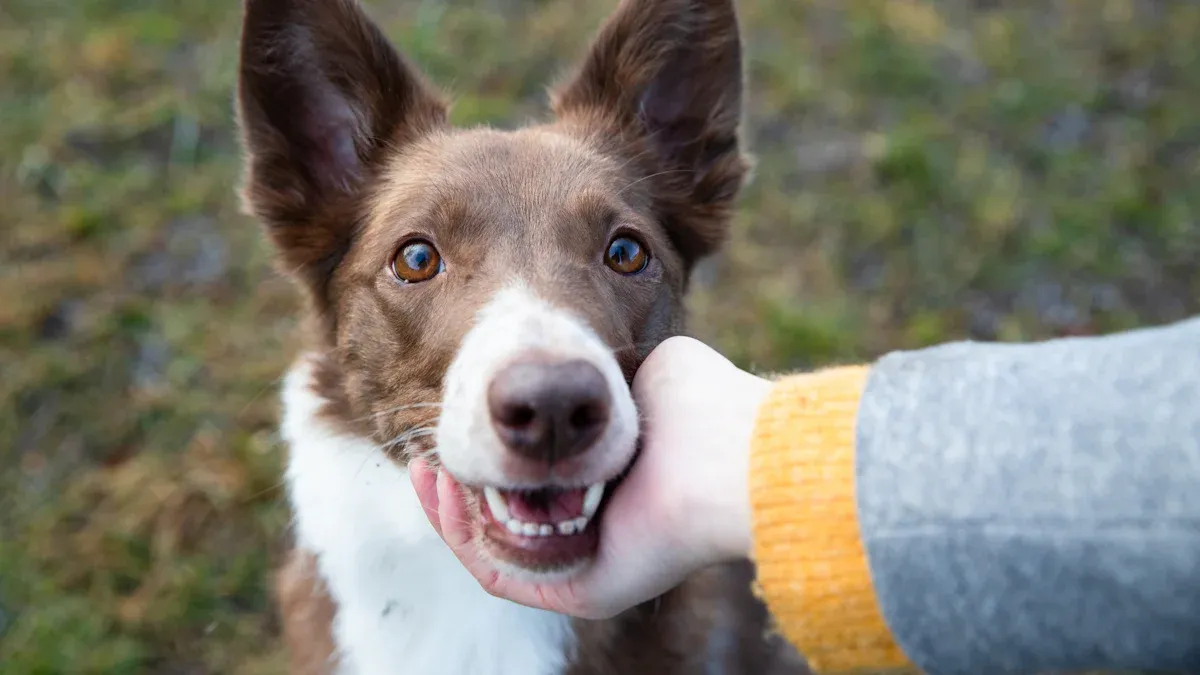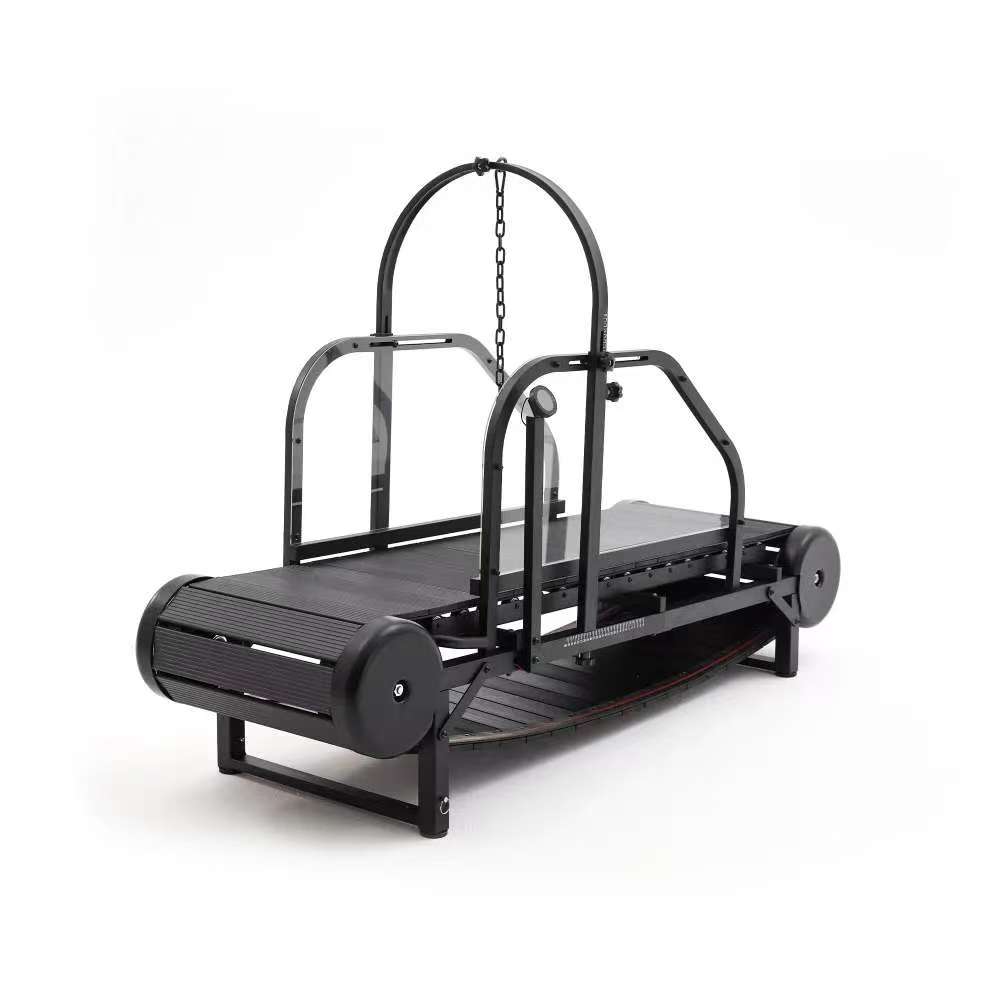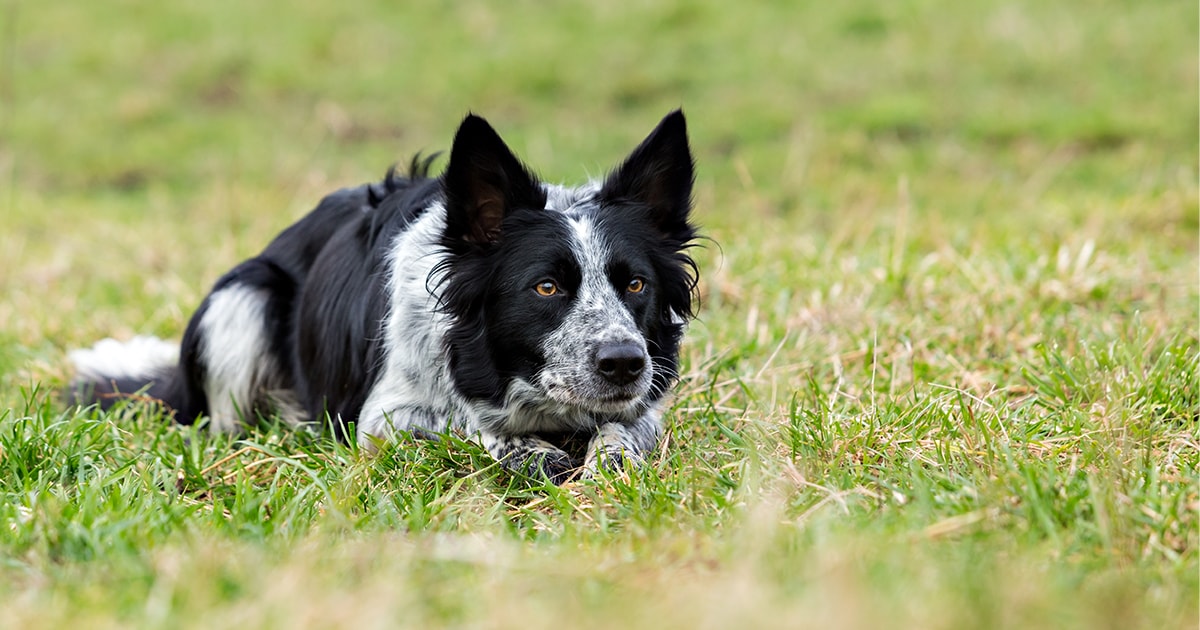Border Collies are one of the smartest dog breeds. Their special personality shows in their behavior. These medium-sized herding dogs come from the area between Scotland and England. They have great intelligence and a strong herding instinct. With their intense stare, known as the 'eye' behavior, they can control sheep well. To keep a Border Collie happy and well-adjusted, many owners use a dog run machine to provide both mental and physical stimulation. It is important to understand the behavior problems that can happen with Border Collies. This knowledge helps you give the right training and care. A well-stimulated Border Collie does well both mentally and physically.
Common Behavioral Issues in Border Collies
Separation Anxiety

Separation anxiety is a common problem for Border Collies. These dogs need company and can have a hard time when left alone. Knowing what causes this anxiety can help you fix it better.
Causes of Separation Anxiety
Many things can cause separation anxiety in your Border Collie. One big reason is their strong bond with you. They see you as their main source of comfort and safety. If you often leave them alone or if your routine changes, they might feel insecure. Other reasons include:
-
Lack of early socialization: If your dog did not experience different places and situations as a puppy, they may find it hard to be alone.
-
Traumatic experiences: Past events, like being abandoned or moved, can add to their anxiety.
-
Changes in the household: New family members, moving to a new place, or changes in your schedule can cause anxiety.
Signs of Distress
It is important to notice the signs of distress to help with separation anxiety. Your Border Collie may show small signs before you leave, such as:
-
Yawning
-
Lip licking
-
Slight panting
-
Occasionally mouthing at the gate
When you are gone, you might see more obvious signs like:
-
Barking or howling
-
Urinating indoors
-
Destructive actions, like tearing up things
When you come back, your dog may try to stay close to you, like being near the door or wagging their tail. You might also see them yawning and panting, which shows they are feeling stressed about being apart.
Aggression in Border Collies
Aggression can be a big worry for many Border Collie owners. It is important to know the types of aggression and what causes it. With the right training, you can help your dog deal with these problems.
Types of Aggression
Border Collies usually show low aggression compared to other breeds. They are part of the herding group, which means they are less aggressive towards people and other animals. Here are some common types of aggression:
-
Fear-based aggression: This happens when your dog feels scared or threatened. They may act aggressively to protect themselves.
-
Protective aggression: Some Border Collies may become aggressive when they want to guard their home or family.
-
Play aggression: Sometimes, what looks like aggression is just your dog playing too rough. This can happen when they play with other dogs or with you.
Triggers for Aggression
Many things can trigger aggressive behavior in Border Collies. Knowing these triggers can help you stop unwanted reactions. Here are some common triggers:
-
High prey drive: Border Collies have a strong urge to chase. This can lead to aggressive actions towards things that are not prey, like kids, runners, or cyclists.
-
Guarding instincts: If your dog feels they need to protect their space or family, they may react aggressively to things they see as threats.
-
Hyperactivity: A bored or overstimulated Border Collie may act out aggressively. It is important to keep them mentally and physically busy.
-
Fear: If your dog feels trapped or threatened, they may become aggressive to defend themselves.
Research shows that aggression traits can be very different among breeds. Border Collies are not known for being very aggressive, but they can still show aggressive behaviors in certain situations. This shows the need for special training programs to control aggression that fit their unique instincts.
Compulsive Behaviors
Border Collies can have compulsive behaviors because of their strong herding instincts. One common problem is focusing on lights and shadows. You might see your dog chasing light beams or jumping at shadows. This behavior comes from their natural urge to herd and chase. It may look harmless, but it can cause frustration and anxiety for your dog.
Fixating on Lights and Shadows
When your Border Collie focuses on lights or shadows, it can become a repeated action. This fixation usually happens when they feel bored or not stimulated enough. You might watch them run around the room, bark, or try to catch the tricky light. This behavior can be fun at first, but it can turn into a compulsive habit if not fixed.
Noise Sensitivity
Noise sensitivity is a common problem for many Border Collies. These dogs often react strongly to loud or sudden sounds. A poll from a Border Collie Facebook group showed that 67% of owners said their dogs were sensitive to noises like thunder, fireworks, and loud engines. Knowing why this happens can help you find good solutions.
Causes of Noise Sensitivity
Many things can cause noise sensitivity in Border Collies:
-
Genetics: Some dogs are just more likely to feel anxious and scared.
-
Lack of Exposure: If your dog hasn’t heard different sounds while growing up, they may react more strongly to new noises.
-
Previous Traumatic Experiences: A loud noise that scared your dog before can lead to lasting fear.
The Role of a Dog Run Machine in Addressing Border Collie Behavioral Issues

Energy Management
A dog run machine is a godsend for managing a Border Collie's excessive energy. These machines provide a consistent and controlled way to ensure that the dog gets the physical exercise it needs, regardless of weather conditions or time constraints. Whether it's a rainy day, a scorching summer afternoon, or a busy workday, the dog run machine allows the Border Collie to burn off energy, reducing the likelihood of destructive behavior. Regular sessions on the machine can also help the dog maintain a healthy weight, which is crucial for its overall well - being.
Mental Stimulation and Prevention of Obsessive Behaviors
Using a dog run machine isn't just about physical exercise; it also provides mental stimulation. The act of running on the machine requires the dog to focus and concentrate, engaging its mind as well as its body. This mental engagement helps to prevent the development of obsessive - compulsive behaviors. Additionally, by incorporating training commands during the run, such as changing speeds on cue or stopping at a specific signal, owners can further challenge the dog's intelligence, keeping its mind sharp and occupied.
Redirecting Herding Instincts
A dog run machine can be used as a tool to redirect a Border Collie's herding instincts in a safe and controlled manner. Owners can create a training routine where the dog runs on the machine while following visual cues or commands. This mimics the herding behavior in a non - threatening environment, allowing the dog to satisfy its instinctual drive without causing problems in the real world. Over time, this can help the dog learn appropriate ways to channel its herding instincts.
Alleviating Separation Anxiety
By ensuring that a Border Collie is physically and mentally tired before being left alone, a dog run machine can significantly reduce separation anxiety. A well - exercised dog is more likely to rest peacefully while the owner is away, rather than becoming anxious and destructive. Additionally, the routine of using the machine can provide a sense of security and predictability for the dog, further easing its anxiety when facing periods of alone time.
Building Confidence and Reducing Fear - Based Aggression
For Border Collies that exhibit fear - based aggression, a dog run machine can be part of a confidence - building strategy. The controlled environment of the machine allows the dog to have positive experiences and gradually build confidence. As the dog becomes more comfortable and confident during runs, this newfound self - assurance can translate into other areas of its life. With increased confidence, the dog is less likely to feel threatened and, consequently, less likely to display aggressive behavior.
Incorporating a Dog Treadmill into Your Border Collie's Routine
Introduction and Acclimation
Introducing a Border Collie to a dog run machine should be a slow and careful process. Start by allowing the dog to explore the stationary machine, sniffing it and getting familiar with its presence. Use treats and praise to create a positive association. Once the dog seems comfortable, nudge on the runway and encourage the dog to step onto the belt. Begin with very short sessions, just a few minutes at a time, and gradually increase the duration as the dog becomes more accustomed to the movement.
Customizing the Training Plan
Every Border Collie is unique, so it's important to customize the training plan on the dog run machine based on the individual dog's age, fitness level, and behavioral issues. Younger, more energetic dogs may be able to handle longer and more intense sessions, while older dogs or those with health issues may require shorter, slower runs. If the dog is being trained to address specific behavioral problems, such as redirecting herding instincts, the training plan should include targeted exercises and commands.
Combining with Other Activities
A dog run machine should not replace other forms of exercise and mental stimulation. It should be combined with outdoor walks, playtime, and training sessions. Border Collies also benefit from activities that challenge their intelligence, such as agility training, obedience trials, or puzzle toys. By providing a variety of activities, owners can ensure that their Border Collie remains well - rounded, happy, and free from behavioral issues.
Regular Monitoring and Adjustment
During the use of the dog run machine, it's essential to monitor the Border Collie closely. Watch for signs of fatigue, overheating, or discomfort. If the dog shows any signs of distress, stop the session immediately. Regularly assess the dog's progress and adjust the training plan as needed. This may involve increasing the speed or duration of the runs, introducing new commands, or changing the type of exercises to keep the dog engaged and challenged.
Border Collies are great dogs, but they can have some behavior problems. You’ve learned about issues like separation anxiety, aggression, compulsive behaviors, noise sensitivity, and needing mental stimulation. Each of these problems can affect your dog's happiness and health.
Remember: Fixing these problems is important for a good relationship with your Border Collie.
Genetic factors also affect their behavior. For example, studies show that some genes are connected to herding instincts and compulsive actions like chasing lights.
|
Key Behavioral Issues |
Details |
|---|---|
|
Compulsive behaviors |
Staring, fly snapping, and toy-related actions |
|
Aggression |
More common in males; can be managed with training |
|
Noise sensitivity |
Often gets worse with age; needs careful handling |

In conclusion, while Border Collies are incredible dogs with unique talents and personalities, they do come with their own set of behavioral challenges. However, with a proper understanding of their needs and the strategic use of tools like a dog run machine, owners can effectively address these issues. By providing adequate physical exercise, mental stimulation, and a structured routine, you can help your Border Collie become a well - behaved, happy, and fulfilled member of the family. With patience, consistency, and the right approach, the joys of owning a Border Collie far outweigh the challenges, and you can build a strong, lasting bond with your intelligent and energetic companion.










0 Comments